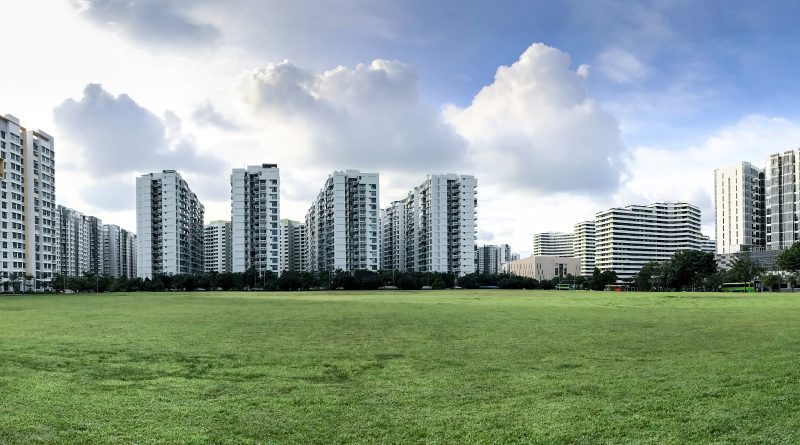Learning from Singapore to Tackle America’s Housing Crisis
The United States faces a severe housing crisis, with soaring prices and limited affordable options for middle- and low-income families. In response, Vice President Kamala Harris has proposed a comprehensive housing plan aimed at making housing more affordable and accessible. Inspired by international models, particularly Singapore’s highly successful public housing system, Harris’s plan represents a bold new vision for tackling America’s housing challenges.
Singapore’s public housing system is often hailed as one of the most effective in the world. Approximately 80% of Singapore’s population lives in government-built apartments, thanks to a model that combines high levels of government control, strategic subsidies, and comprehensive urban planning. The Housing and Development Board (HDB), established in 1960, plays a central role in planning, constructing, and managing residential properties, ensuring that they remain affordable for a vast majority of citizens.
One of the key strengths of the Singaporean model is its ability to offer affordable housing while maintaining high standards of living. The government provides significant subsidies to first-time buyers and ensures that public housing is well-integrated with essential services, such as schools, healthcare, and public transportation. This model has been credited with achieving high homeownership rates, promoting social stability, and fostering a strong sense of community among residents.
Singapore’s approach also includes strict regulations and policies to prevent speculation and maintain affordability. For example, there are restrictions on the resale of public housing, and citizens must meet certain criteria to qualify for government housing programs. This approach has helped maintain stable housing prices, even amid global economic fluctuations, making it a potential model for other countries grappling with similar challenges.
Harris’s Plan: Adapting Singapore’s Strategies for the U.S.
Kamala Harris’s housing plan seeks to adapt some of these successful elements from Singapore’s model to the U.S. context. The plan focuses on expanding affordable housing options, particularly in areas where the shortage is most acute. One of the core strategies is to increase the federal government’s role in housing development, echoing Singapore’s high degree of government involvement.
Harris proposes significant federal investment in affordable housing projects, including grants for state and local governments to build and refurbish affordable units. Her plan also includes direct financial assistance to renters and first-time homebuyers, designed to reduce housing costs for those most in need. These measures are reminiscent of Singapore’s subsidies and financial aid to help citizens afford their first homes.
Another key aspect of Harris’s plan is zoning reform. The proposal encourages cities and states to revise zoning laws that currently restrict housing supply, a strategy that has been effectively employed in Singapore to maximize land use and promote sustainable urban development. By relaxing zoning laws, Harris aims to spur the construction of high-density, mixed-use developments that can accommodate more affordable housing units.
However, while Harris’s plan draws inspiration from Singapore’s model, it also reflects the unique needs and challenges of the U.S. housing market. The plan includes provisions for increasing funding to combat homelessness, enhancing tenant protections, and providing support for community-based organizations to help those at risk of eviction. These components underscore the need for a multifaceted approach that addresses both supply and demand-side issues in the American housing market.
Challenges of Implementing a Similar Model in the U.S.
Implementing a Singapore-like housing model in the U.S. presents both opportunities and challenges. On the one hand, adopting a government-led approach could help stabilize housing markets, increase affordability, and reduce economic inequality. By expanding the federal role in housing development and providing targeted subsidies, the government could ensure that more Americans have access to affordable housing, particularly in high-cost urban areas.
On the other hand, significant challenges exist in adapting Singapore’s model to the U.S. context. Singapore is a small city-state with a centralized government, allowing for streamlined decision-making and efficient implementation of housing policies. In contrast, the U.S. has a more complex federal system with multiple layers of government, varying regulations, and diverse local needs. Implementing a centralized housing policy in such a decentralized political environment could face substantial resistance from local governments, private developers, and community groups.
Furthermore, there is a cultural dimension to consider. In Singapore, there is broad public acceptance of the government’s role in providing housing, while in the U.S., attitudes towards government intervention are often more skeptical. This skepticism could create political hurdles for a housing plan that relies heavily on federal involvement and regulation.
Despite these challenges, the comparison with Singapore’s model offers valuable lessons for the U.S. Harris’s plan represents a shift towards greater government involvement in housing, recognizing that market-based solutions alone are insufficient to address the current affordability crisis. By drawing on successful international models, the plan highlights the need for innovative and comprehensive strategies to ensure housing remains accessible to all Americans.
Sources:
